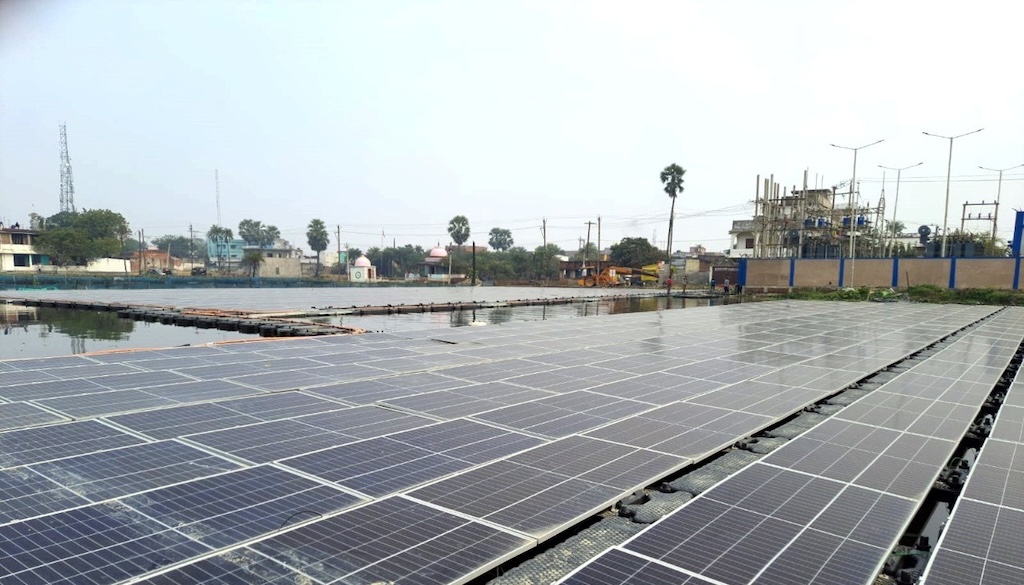
Representative Pic
Patna: Bihar’s largest floating solar power plant is nearing completion in Nawada’s Fulwaria reservoir and is expected to begin generating 10MW of electricity next month, marking a significant stride in the state’s push towards renewable energy.
The new plant will be the third floating solar power facility in Bihar, following existing installations in Darbhanga and Supaul. Built under the Renewable Energy Service Company (RESCO) model, the Fulwaria project has been financed entirely by the private construction agency, with the state power company agreeing to purchase electricity at Rs 3.87 per unit.
Work on the project, located in Fulwaria reservoir, has been ongoing for several months and is now in its final stages. “The company has been given a target to complete construction by July and begin power generation,” said a senior official from the power company overseeing the project.
Floating Potential Across Bihar
The Fulwaria plant is part of a wider strategy to harness Bihar’s water bodies for solar energy. Work has already begun on a 10MW floating solar power project in the Durgawati reservoir in Kaimur, for which tenders have been issued.
Under the state’s “Neeche Machli, Upar Bijli” (Fish Below, Electricity Above) scheme, surveys are underway to establish 2MW floating solar plants in selected locations across North and South Bihar.
Currently, Darbhanga’s floating solar plant produces 1.6MW of electricity, while Supaul’s Rajapokhar pond installation generates 525 kilowatts.
What Is Floating Solar Power?
Floating solar systems, or “floatovoltaics,” involve mounting solar panels on floating structures on water bodies such as reservoirs, ponds or lakes. The generated electricity is transmitted via underwater cables to the grid.
The first floating solar plant was built in Japan in 2007 with a modest 20kW capacity. By 2015, Japan had developed a 7.55MW facility, spurring a rapid expansion of the technology across Asia. Floating plants offer advantages such as reducing water evaporation and making efficient use of space on otherwise idle water surfaces.
A Vast Opportunity
Bihar, with more than 3,300 ponds and reservoirs, holds immense potential for scaling up this clean energy solution. Officials believe that if utilised systematically, these water bodies could generate hundreds of megawatts of electricity, supporting the state’s growing energy needs and climate goals.
“The power company is actively pursuing this strategy,” an official said. “Our aim is to tap into the vast network of reservoirs to drive Bihar’s renewable energy future.”





